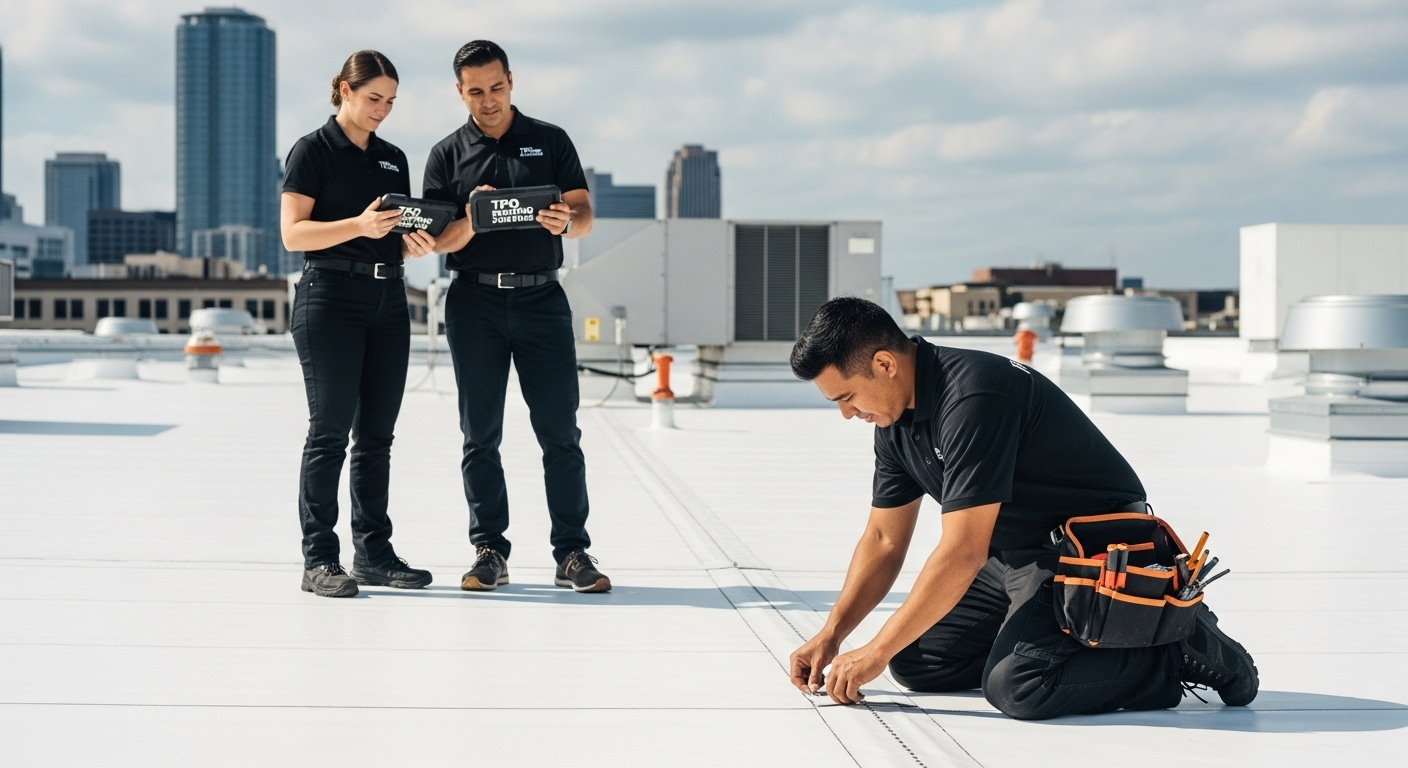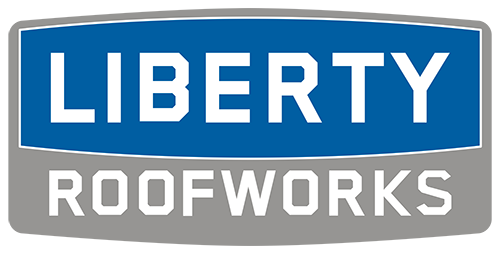TPO roofing is changing the way commercial buildings stay protected, combining modern materials and smart engineering for better results. Most people expect new roofing to be expensive and complicated, but TPO flips that expectation upside down. With potential energy savings of up to 15 percent on annual cooling costs and a flexible membrane built to handle wild weather swings, TPO roofing delivers strength, savings, and peace of mind in one surprising package.
Table of Contents
- What Is TPO Roofing And Its Components?
- Why The Role Of TPO Roofing Matters
- How TPO Roofing Systems Work
- Key Benefits Of TPO Roofing
- Real-World Applications Of TPO Roofing
Quick Summary
| Takeaway | Explanation |
|---|---|
| TPO roofing is cost-effective | TPO roofs offer lower installation and maintenance costs compared to traditional roofing options, leading to significant savings. |
| Reflective properties enhance energy efficiency | TPO membranes reflect solar radiation, reducing cooling costs by up to 15%, which benefits overall energy management. |
| TPO roofing is highly durable | Exceptional resistance to UV radiation and environmental degradation ensures a longer lifespan with fewer repairs needed. |
| Versatile applications in multiple sectors | TPO roofing systems can be used in warehouses, agricultural facilities, retail centers, and more due to their adaptability. |
| Supports sustainability efforts | Made with recyclable materials, TPO roofing contributes to reducing carbon footprints and promoting sustainable construction practices. |
What is TPO Roofing and Its Components?
TPO (Thermoplastic Polyolefin) roofing represents a modern, innovative solution for commercial and industrial building protection. As a single-ply roofing membrane, TPO has gained significant popularity due to its exceptional performance characteristics and cost-effectiveness. Learn more about TPO roofing systems to understand its critical role in building maintenance.
Understanding TPO Membrane Composition
The TPO membrane is a sophisticated blend of polypropylene and ethylene-propylene rubber, engineered to provide superior durability and flexibility. According to the National Renewable Energy Laboratory, this unique composition delivers remarkable benefits for commercial roofing applications:
- Excellent resistance to ultraviolet radiation
- Strong chemical and ozone resistance
- High flexibility across temperature ranges
- Lightweight yet robust construction
Key Components of a TPO Roofing System
A comprehensive TPO roofing system extends beyond the membrane itself, comprising several critical elements that work together to provide comprehensive building protection. These components include:
- Membrane Layer: The primary protective sheet made from TPO material
- Reinforcement Mesh: Typically constructed from polyester, providing structural integrity
- Attachment Mechanisms: Mechanical fasteners or adhesive systems that secure the membrane
- Insulation Layers: Additional materials that enhance thermal performance and energy efficiency
TPO roofing’s design allows for seamless installation and exceptional performance, making it an attractive option for building owners seeking reliable, long-lasting roof protection.
Below is a table summarizing the key components of a TPO roofing system, providing a quick reference for understanding each element’s role in the overall roofing assembly.
| Component | Description |
|---|---|
| Membrane Layer | Primary protective sheet made from TPO material, serving as the waterproofing barrier. |
| Reinforcement Mesh | Polyester mesh that adds structural strength and integrity to the membrane. |
| Attachment Mechanisms | Systems such as mechanical fasteners or adhesives used to secure the membrane to the roof deck. |
| Insulation Layers | Additional materials that improve thermal performance and increase the building’s energy efficiency. |
Why the Role of TPO Roofing Matters
TPO roofing plays a crucial role in protecting commercial and industrial buildings from environmental challenges and potential structural damage. As building owners seek durable, efficient roofing solutions, understanding the significance of TPO roofing becomes paramount. Explore why TPO roofing might be the right choice for your building.
Economic Benefits of TPO Roofing
The economic advantages of TPO roofing extend far beyond initial installation costs.
INFOGRAPHIC:infographic_content] According to research from the [Building and Construction Technology Program, TPO offers substantial long-term financial benefits:
- Lower installation and maintenance expenses compared to traditional roofing materials
- Excellent energy efficiency that reduces cooling costs
- Extended roof lifespan with minimal repair requirements
- Superior durability that minimizes replacement frequency
Environmental and Performance Advantages
TPO roofing systems provide significant environmental performance benefits that make them an attractive option for modern buildings. Reflective properties of TPO membranes help reduce urban heat island effects and decrease overall building energy consumption. Key environmental advantages include:
- High solar reflectivity that reduces heat absorption
- Recyclable materials supporting sustainable construction practices
- Reduced carbon footprint through improved energy efficiency
- Resistance to environmental degradation and chemical exposure
By combining advanced material science with practical engineering, TPO roofing represents a sophisticated solution that addresses both economic and environmental concerns for building owners. Its ability to provide comprehensive protection while maintaining long-term performance makes it an exceptional choice in modern commercial roofing applications.
How TPO Roofing Systems Work
TPO roofing systems represent a sophisticated approach to building protection, utilizing advanced materials and installation techniques to create a seamless, durable barrier against environmental challenges.
Learn more about potential TPO roof maintenance issues to understand the system’s comprehensive functionality.
Membrane Installation and Attachment Methods
The installation process of TPO roofing systems is critical to their overall performance.
This table compares the three main TPO membrane installation methods, helping readers quickly understand their differences and when each is typically preferred.
| Installation Method | Description | Typical Use Cases |
|---|---|---|
| Fully Adhered | Membrane is chemically bonded directly to the roof substrate. | Flat or low-slope roofs requiring strong adhesion. |
| Mechanically Fastened | Membrane is secured using specialized mechanical fasteners. | Large commercial roofs needing quick installation. |
| Ballasted | Membrane is held in place by heavy materials, like river rocks or concrete pavers. | Roofs where minimal roof penetration is preferred. |
- Fully Adhered Method: The membrane is chemically bonded directly to the roof substrate
- Mechanically Fastened Method: Membrane is secured using specialized mechanical fasteners
- Ballasted Method: Membrane is held in place by heavy materials like river rocks or concrete pavers
Thermal and Performance Characteristics
TPO roofing systems are engineered to deliver exceptional thermal performance and environmental resilience. Key performance characteristics include:
- Heat-welded seams that create a monolithic, watertight surface
- Excellent reflectivity that minimizes solar heat absorption
- High resistance to ultraviolet radiation and environmental degradation
- Ability to accommodate building movement and structural shifts
The intricate design of TPO roofing systems allows for superior protection by integrating material science with practical engineering principles.
 Each component works synergistically to create a robust, long-lasting roofing solution that adapts to varying environmental conditions while maintaining structural integrity and energy efficiency.
Each component works synergistically to create a robust, long-lasting roofing solution that adapts to varying environmental conditions while maintaining structural integrity and energy efficiency.
Key Benefits of TPO Roofing
TPO roofing systems offer a comprehensive suite of advantages that make them an exceptional choice for commercial and industrial buildings. Discover TPO roofing solutions in Concord, NC and understand how these innovative systems can transform your building’s performance.
Energy Efficiency and Cost Savings
According to the U.S. Department of Energy, TPO roofing delivers remarkable energy performance benefits. The system’s unique characteristics translate into significant economic advantages:
- Reduced Cooling Costs: Reflective surface minimizes heat absorption
- Lower utility expenses through improved thermal regulation
- Potential energy savings of up to 15% on annual cooling expenditures
- Decreased overall building temperature management expenses
Durability and Environmental Resilience
Key durability features of TPO roofing systems demonstrate their exceptional long-term performance:
- Superior resistance to ultraviolet radiation
- Exceptional chemical and environmental degradation protection
- High tensile strength that withstands significant structural stress
- Flexibility to accommodate building movement and temperature variations
TPO roofing represents a strategic investment in building infrastructure, combining cutting-edge material science with practical engineering solutions. By providing a robust, energy-efficient, and environmentally responsive roofing system, TPO delivers comprehensive protection that extends far beyond traditional roofing materials. Building owners can expect a reliable, cost-effective solution that adapts to diverse environmental challenges while maintaining exceptional performance standards.
Real-World Applications of TPO Roofing
TPO roofing systems have emerged as a versatile solution across multiple industries, demonstrating remarkable adaptability in diverse architectural and environmental contexts. Explore our comprehensive TPO roofing services to understand how these innovative systems can address complex building requirements.
Commercial and Industrial Sector Applications
The commercial and industrial sectors have widely adopted TPO roofing due to its exceptional performance characteristics. Key application areas include:
- Warehouse and distribution center facilities
- Manufacturing plants and industrial complexes
- Retail centers and large commercial buildings
- Agricultural storage and processing facilities
- Logistics and transportation infrastructure
Specialized Environmental and Architectural Implementations
According to architectural engineering research from the National Roofing Contractors Association, TPO roofing demonstrates remarkable versatility in specialized environments:
- Urban Heat Island Mitigation: White TPO membranes reduce heat absorption in dense metropolitan areas
- Green building and sustainable design projects
- High-altitude and extreme climate zone constructions
- Renovation of historic commercial structures
- Facilities requiring stringent thermal and chemical resistance
TPO roofing represents more than just a protective covering. It is a sophisticated engineering solution that adapts to complex architectural demands, providing robust protection while supporting broader environmental and operational objectives. By integrating advanced material technology with practical design principles, TPO roofing systems continue to revolutionize building envelope performance across multiple sectors.
Upgrade Your Building with Liberty Roofworks’ TPO Roofing Solutions
You know how important a strong, cost-effective, and energy-efficient roof is for your facility. The article highlighted the durability and performance of TPO roofing, as well as its ability to lower energy bills and resist harsh weather. Still, many building owners are uneasy about finding the right system and a trustworthy contractor, especially when it comes to proper installation and maintenance. Choosing the wrong solution can lead to higher costs and long-term frustrations.
When you choose Liberty Roofworks, you get a partner who delivers top-quality TPO installation and repair services in Charlotte, NC. We understand how critical it is to have a roof that protects your business and saves you money. Ready to experience lower energy costs, better protection, and a smoother roofing process? Contact us today and let our experienced team help you enjoy all the benefits covered in “Understanding the Role of TPO Roofing for Your Building.” The best time to make a smart roofing decision is now.
Frequently Asked Questions
What are the main benefits of TPO roofing?
TPO roofing offers several key benefits, including energy efficiency through its reflective properties, durability against ultraviolet radiation and chemical exposure, and cost savings on installation and maintenance compared to traditional roofing materials.
How does TPO roofing contribute to energy efficiency?
TPO roofing systems feature high solar reflectivity, which minimizes heat absorption, reducing cooling costs and overall building temperature management expenses. This can lead to potential energy savings of up to 15% annually on cooling expenditures.
What components make up a TPO roofing system?
A typical TPO roofing system consists of a membrane layer made from TPO material, reinforcement mesh for structural integrity, attachment mechanisms to secure the membrane, and insulation layers that enhance thermal performance and energy efficiency.
How is TPO roofing installed, and what methods are used?
TPO roofing can be installed using several methods including the fully adhered method (chemically bonded to the roof substrate), mechanically fastened method (using specialized fasteners), and ballasted method (held in place with heavy materials). Each method plays a key role in ensuring the system’s performance and durability.
